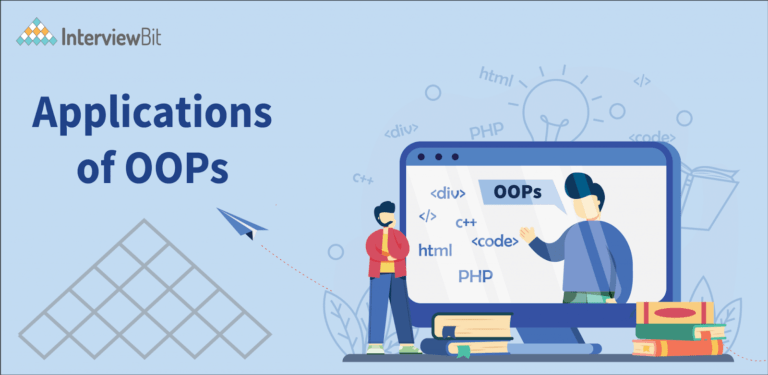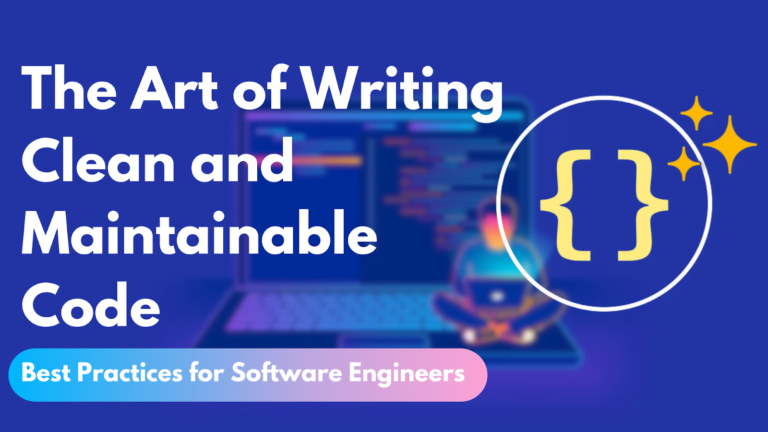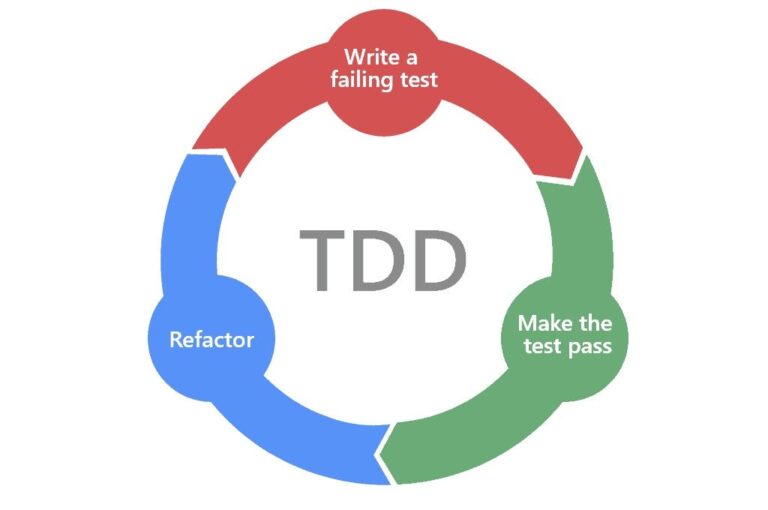An organized approach to software development is provided by the object-oriented programming paradigm (OOP), which groups behavior and data into objects, each of which is an instance of a class. These classes serve as the foundation for complicated systems by defining the properties and functions that define the objects.
Classes can inherit properties and methods from other classes, establishing links and hierarchies between objects. This is a fundamental component of object-oriented programming (OOP). This makes it possible to reuse code and create logical linkages between various software components.
Classes can inherit properties and methods from other classes, establishing links and hierarchies between objects. This is a fundamental component of object-oriented programming (OOP). This makes it possible to reuse code and create logical linkages between various software components.
OOP allows objects to communicate and work together to achieve goals through messages or method calls. It simplifies encapsulation by containing data and game logic in manageable units, allowing developers to focus on high-level functionality and design. Polymorphism allows objects to react differently to messages, promoting code extension and flexibility. OOP also allows developers to use design patterns for code consistency, dependability, and scalability.
History of Game Development
Game Development involves the entire design, creation, testing, and release of games, considering mechanics, mechanics, reliability, rewards, player commitment, and planning for every level.
To identify problems with gaming frameworks, several tools were developed, such as libGDX and OpenGL. With its abundance of pre-built features and functionalities, they made game production considerably faster and easier. In any event, for a non-programmer, it was still challenging to get into the industry or truly comprehend a framework. In the world of game creation, that was a common scenario.

At that time, the game engines Unreal, Game Maker, Construct, and Unity were developed. An engine is just a framework with a more realistic and pleasant approach. It helped with the graphic creation of the game and made use of a graphic user interface or GUI.
Similar to Game Maker and Construct, there are instances where the amount of pre-made routines is so great that even someone without any prior programming experience may develop and create a game. Indeed, expanding the scene and making game production accessible to almost everyone without any prior training.
Key OOP Principles in Game Development
- Classes and objects: A class is a blueprint for creating objects, and defining attributes and methods. An instance of a class, like Enemy, has its attributes and can use the defined methods, like creating a zombie with specific health, speed, and damage.
- Inheritance and polymorphism: Inheritance and polymorphism are methods in programming that allow for the creation of new classes based on existing ones, and the modification of the behavior of a parent class in a child class, respectively, to make it more powerful and unique.
- Encapsulation and abstraction: Encapsulation hides an object’s internal details, allowing control over interactions and data access. Private modifiers restrict access to properties and methods. Abstraction simplifies complexity by revealing essential features and functionality, focusing on behavior without implementation details. Abstract classes define general behavior without implementation details.
- Composition and aggregation: Composition and aggregation are methods for creating complex objects by combining simpler ones. Composition involves an object owning or containing other objects, while aggregation references or uses other objects, like creating a class with properties from other classes.
- Design patterns: Design patterns are best practices for organizing code in software design. They help in ensuring unique instances of classes, creating objects based on criteria, and notifying other objects of changes in an object’s state.
OOP Languages and Frameworks for Game Development
There’s no denying that the gaming business is expanding, with over $365 billion in sales predicted by 2024! The gaming business has developed from straightforward arcade games that are incredibly entertaining to complex and immersive experiences that draw in millions of gamers worldwide. However, how are these games made? Simple, talented programmers creating games with computer languages! Maybe you’ve always wished to become a game developer instead of just a player. Well, why not?

Why not make games that you enjoy playing? Will Programmers Be Replaced by AI?
The finest programming languages for game creation should be learned right now, especially since the US Bureau of Labor and Statistics states that software professionals make an average income of more than $130,000.
- C++: C++ is a highly versatile and efficient programming language ideal for game development due to its high performance and versatility. It offers control over graphic processing and hardware, making it ideal for creating complex games. C++ is also an object-oriented language, allowing for easy code organization into reusable components. Key game development features include popular games, platforms like Unreal Engine, CryEngine, Godot, Minecraft, World of Warcraft, and League of Legends, and support for various platforms.
- C# and .NET: The .NET platform is home to the contemporary OOP language C#. Features like delegates, events, generics, and LINQ are supported. Additionally, it permits compatibility with F# and Visual Basic, two other.NET languages. The.NET framework offers a class library, a common runtime environment, and a collection of tools for C# and other languages. Web development, cross-platform apps, and cloud services are further supported by .NET.
- Java and Spring: One of the most popular OOP languages is Java because it is strong, flexible, and platform-independent. Lambda expressions, interfaces, generics, and multiple inheritance are all supported. Spring is a well-liked Java framework that makes dependency injection, testing, and web development easier. Additionally, Spring provides a range of modules for various uses, including Spring Data, Spring Security, and Spring Boot.
- Python and Django: Another well-liked OOP language is Python since it’s simple to learn, write, and read. Multiple paradigms, including procedural, functional, and OOP, are supported. Additionally, it offers an extensive collection of libraries and tools for a variety of fields, including web development, machine learning, and data science. Django is a powerful framework for Python that follows the model-view-template (MVT) pattern. Authentication, database abstraction, template engine, and admin interface are among the features it offers.
- JavaScript and React: Front-end and back-end developers may both utilize the scripting language JavaScript. It is compatible with OOP elements like classes, constructors, and prototypes. It also has a vast ecosystem of frameworks and libraries, such as Angular, Node.js, and jQuery, for a variety of purposes. A well-liked JavaScript framework for creating user interfaces is called React. It builds dynamic and interactive web pages with the use of components, props, states, and hooks.
Designing Games with OOP
Using Object-Oriented Programming (OOP) to design games entails putting the ideas of OOP to use in building modular, scalable, and maintainable gaming systems. Let’s explore this subject in more detail:
- Game Design Fundamentals: Understanding game design fundamentals, including game mechanics, player interaction, and game loops, is crucial for understanding OOP. These include movement, combat, puzzle-solving, resource management, user interfaces, controls, and feedback mechanisms.
- Object-Oriented Game Architecture: Object-oriented game architecture organizes game systems using OOP principles, with common patterns like Entity-Component-System (ECS), Model-View-Controller (MVC), and Component-Based Architecture (CBA) promoting code reuse, modularity, and flexibility in entity behavior.
- Design Patterns in Game Development: Design patterns in game development, such as singleton, factory, and observer, provide reusable solutions for managing global game states, encapsulating object creation logic, and defining one-to-many dependency between objects, resulting in robust, flexible, and maintainable game systems.
Example: Designing a 2D Platformer Game
Let us examine the creation of a 2D platformer game to demonstrate the fundamentals of creating games using object-oriented programming. The user controls a figure in this game who moves through stages, dodging obstacles, and gathering power-ups. The layout might include:
- Every game entity, including the player character, adversaries, and collectibles, is represented as an entity made up of different components (e.g., Transform, SpriteRenderer, Collider, Rigidbody). This is known as the entity-component-system architecture.
- The main features of the game, such as character movement, leaping, collision detection, and scoring, should be explained.
- Level Design: Using tilemaps or other level design tools, create level layouts that include interactive components, adversaries, platforms, and obstacles.
- User Interface: Create menus for beginning, stopping, and resuming the game as well as user interfaces for showing player health, score, and other game data.
Object-oriented programming (OOP) principles are applied to game architecture, enabling developers to create a structured, extensible foundation for gameplay features, mechanics, and content, thereby facilitating modular, scalable, and maintainable games.
Implementing OOP in Game Development
Putting design thoughts into tangible code structures and systems is the process of putting Object-Oriented Programming (OOP) principles into practice in game development. Let’s see how OOP implementation works in practice for game development:
- Game Objects and Components: OOP-based game development involves representing game entities as objects with associated components, such as characters, enemies, obstacles, and collectibles. These entities contain entity-specific data and behavior and are composed of multiple components for specific functionality. This approach promotes code reuse, modularity, and flexibility.
- Player Input and Controls: Game development involves handling player input and implementing controls using object-oriented principles. Input handling systems translate input into game actions, character movement is implemented using OOP principles like encapsulation, inheritance, and polymorphism, and player interaction systems handle interactions with game objects, NPCs, and the game world.
- Game State Management: To manage game states, use OOP principles. Implement a state machine or finite state system for state management, define transition rules, and use object-oriented design patterns. Implement UI management systems for user interfaces, such as menus and notifications, using object-oriented design to define separate objects with associated behaviors.
Advanced OOP Techniques in Game Development
In game creation, advanced Object-Oriented Programming (OOP) approaches go beyond the fundamentals and provide sophisticated solutions to challenging issues. Let’s investigate a few of these methods:
- AI and Pathfinding: AI and pathfinding are essential in games, allowing NPCs to exhibit realistic behaviors and navigate intelligently. Advanced object-oriented design techniques are used to implement AI behaviors, pathfinding algorithms, and navigation meshes. AI behaviors are defined using patterns like the State or Behavior Tree, while pathfinding algorithms are implemented using A* or Dijkstra’s algorithms.
- Physics and Collision Detection: Physics simulation and collision detection are crucial for creating interactive game worlds. Advanced object-oriented design techniques can improve their implementation. These include implementing physics simulations using object-oriented design patterns, defining collision detection algorithms, and integrating third-party physics engines into game projects. These techniques provide a clean interface for interacting with physics systems.
- Networking and Multiplayer: Networking and multiplayer functionality in online games can be improved using advanced object-oriented techniques. These include client-server architecture, message-passing systems, and synchronization strategies. Client-server architecture uses object-oriented design patterns, while message-passing systems use flexible protocols. Synchronization strategies maintain consistency between client and server states, using mechanisms like interpolation, prediction, or reconciliation.
Testing and Debugging OOP Game Code
Debugging and testing are essential components of game development since they guarantee that the code runs consistently and correctly on many platforms and in various settings. Let’s examine more sophisticated methods for testing and troubleshooting game code written in Object-Oriented Programming (OOP):
- Unit Testing and Test-Driven Development (TDD): Unit testing and Test-Driven Development (TDD) are methodologies used to ensure the correctness and reliability of game code. Unit testing involves implementing tests for individual components, systems, and game features using frameworks like Google Test or Unity Test Framework. TDD involves writing tests before implementing game features, and mocking and stubing techniques for controlled testing environments.
- Debugging Tools and Techniques: Debugging tools are crucial for identifying and fixing bugs in game code. They include logging, debugging tools, and profiling. Logging provides diagnostic information while debugging tools analyze program behavior. Profiling uses performance analysis tools to identify bottlenecks, memory leaks, and optimization opportunities.
- Quality Assurance and Playtesting: Quality assurance and playtesting are crucial for validating game functionality and user experience. Automated testing streamlines the process, while manual testing evaluates gameplay mechanics and user interfaces. Playtesting sessions gather feedback on mechanics, difficulty balancing, and player engagement, allowing for iterative design improvements to enhance overall game quality and satisfaction.
The stability, performance, and quality of OOP game code may be guaranteed by developers by including testing and debugging procedures in the game development process. This allows developers to quickly find and fix problems. These procedures improve the overall player experience and help gaming projects succeed.
To sum up, Object-Oriented Programming (OOP) is a fundamental concept in the game production industry that provides programmers with an effective framework for creating engaging and immersive gaming experiences. The foundation of compelling gameplay may be created by developers by using OOP best practices and concepts to create modular, scalable, and maintainable game code.
OOP is ubiquitous in game development, offering a strong foundation for bringing creative concepts to life in everything from the implementation of complex game mechanics to the creation of intelligent AI behaviors and performance optimization. Developers may create inventive and memorable games that appeal to players all around the world by grasping OOP principles and approaches, which open up a universe of limitless possibilities.
OOP is essentially a road map for game creators, enabling them to translate concepts into interactive experiences that enthrall and motivate gamers on a variety of gaming platforms. With OOP leading the way, game creation has an endless future full of creative possibilities.








